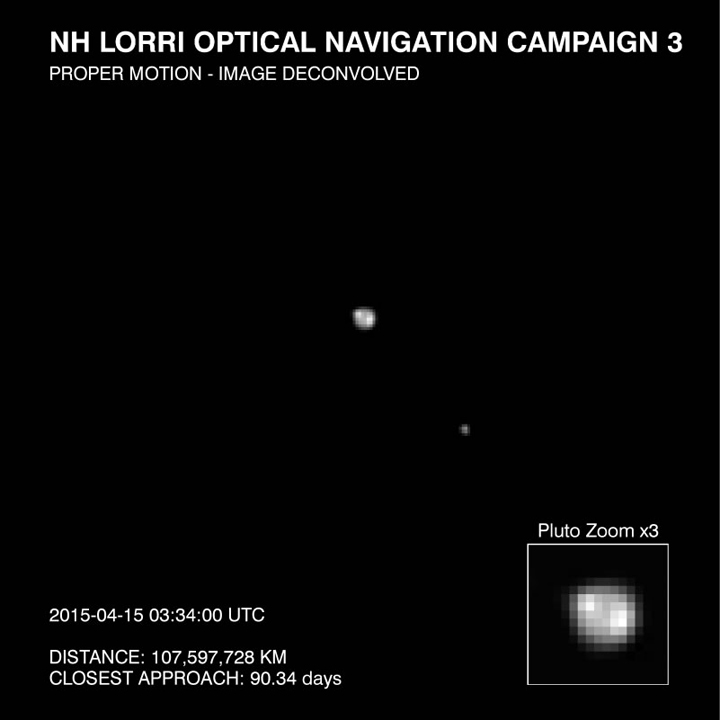TORONTO – NASA’S New Horizons mission destined for Pluto is revealing detail on the tiny dwarf planet.

The spacecraft revealed bright and dark regions on the surface, the first time any such detail has ever been seen on the far-off world. The images, taken with a telescopic camera at a distance of about 113 million kilometres, suggest that Pluto may even have a polar cap.
READ MORE: ‘We are at Pluto’s doorstep.’- New Horizons mission edges closer to mysterious world
“As we approach the Pluto system we are starting to see intriguing features such as a bright region near Pluto’s visible pole, starting the great scientific adventure to understand this enigmatic celestial object,” said John Grunsfeld, associate administrator for NASA’s Science Mission Directorate in Washington in a press conference on Wednesday.

Pluto, discovered by Clyde Tombaugh in 1930, has had a life of controversy. It was considered our solar system’s ninth planet until 2006 when the International Astronomical Union reclassified it as a dwarf planet. It was just seven months after the New Horizons mission to Pluto launched.
READ MORE: Want to name features on a (dwarf) planet? Public invited to take part in Pluto mission
The mission marks the farthest a dedicated spacecraft has flown in our solar system. It aims to reveal more information about the origin of icy worlds and the formation of our solar system.
“After traveling more than nine years through space, it’s stunning to see Pluto, literally a dot of light as seen from Earth, becoming a real place right before our eyes,” said Alan Stern, New Horizons principal investigator at Southwest Research Institute in Boulder, Colorado.
Because New Horizons had to travel at incredible speeds to reach Pluto, it won’t stop. Instead, it will make its closest pass on July 14.
New Horizons is the second mission to visit a dwarf planet this year, with Dawn — orbiting Ceres — being the other.


Comments